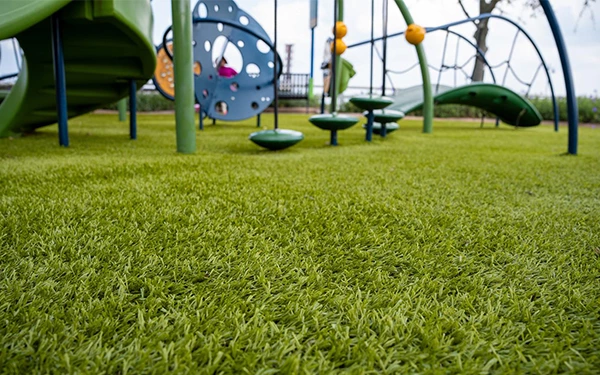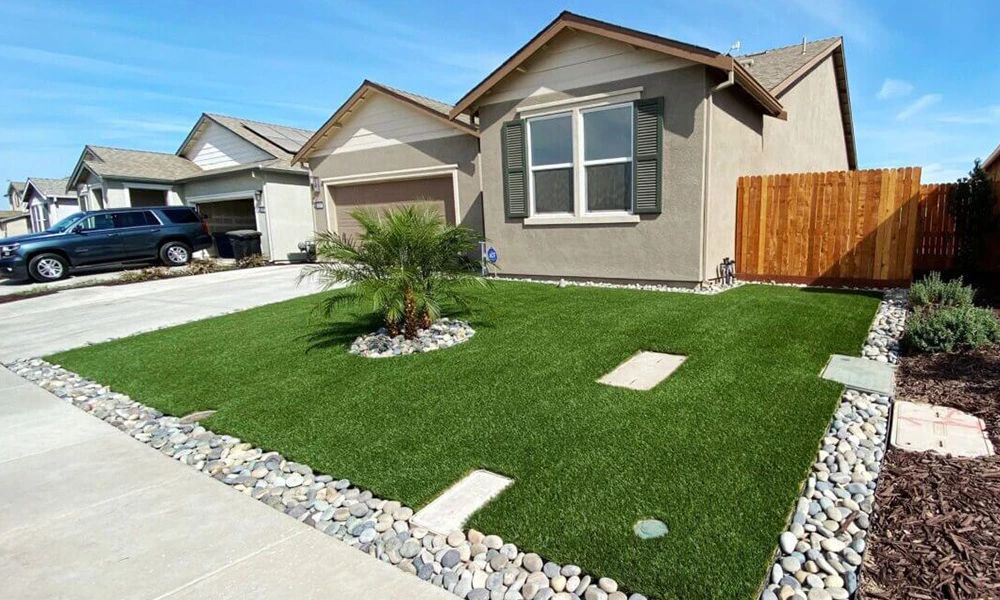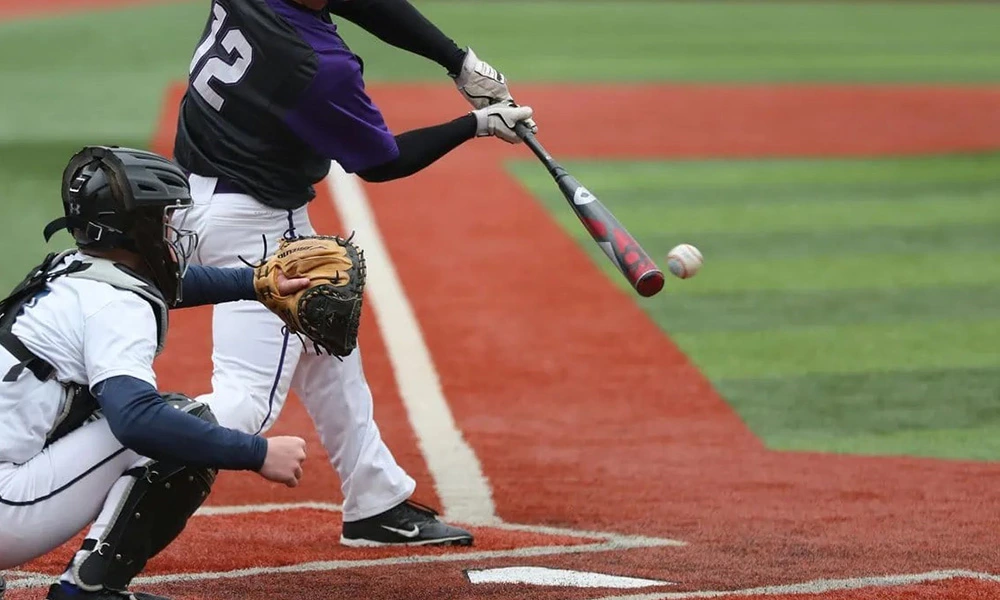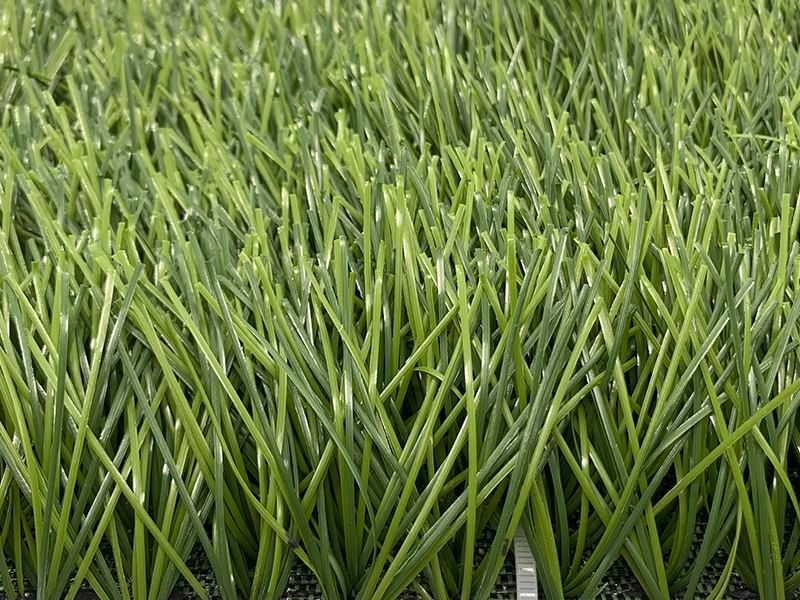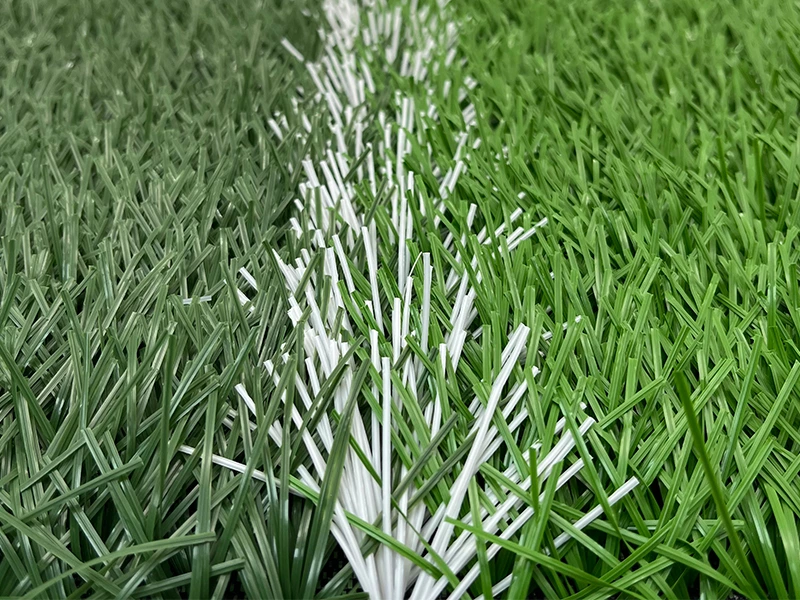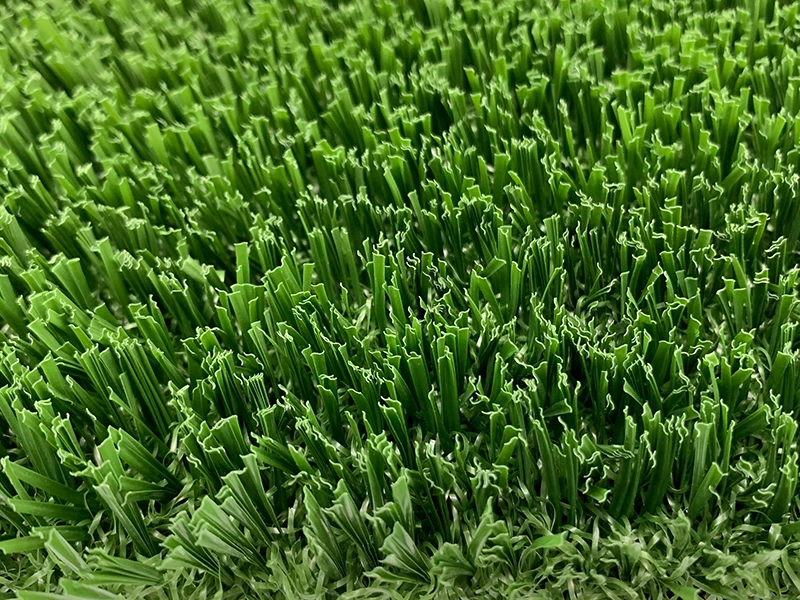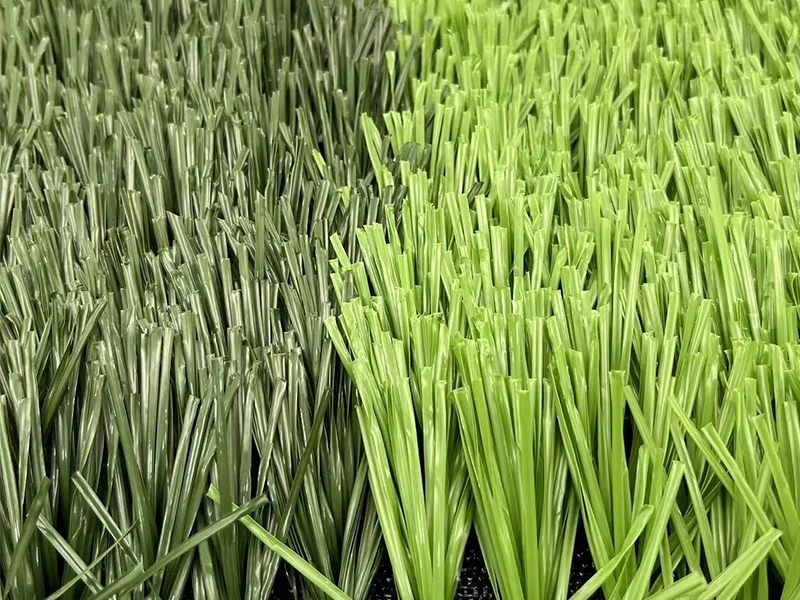Artificial Turf for Playgrounds: A Safe and Practical Choice
In the planning and construction of urban playgrounds, the choice of surface material directly impacts children's play experience, safety, and operational efficiency. With the continuous advancement of artificial turf technology, it has become an ideal choice for an increasing number of playgrounds due to its numerous advantages.
Adapting to playground needs, artificial turf offers significant advantages
As a haven for children to unleash their energy, playgrounds place stringent demands on surface materials in many areas, and artificial turf precisely meets these requirements.
Upgraded safety measures reduce the risk of accidents
From a safety perspective, children running, jumping, and climbing in playgrounds are commonplace, and falls are inevitable. Artificial turf has a soft and smooth surface, and its internal high-elasticity cushioning layer effectively absorbs impact, significantly reducing the risk of injuries such as scrapes and bumps from falls, providing greater peace of mind for parents and managers.
Low maintenance and high durability reduce operational burdens
Traditional natural turf requires extensive maintenance and resources for regular watering, fertilizing, and mowing. It is also highly susceptible to weather, becoming muddy in rainy weather and withering in hot, dry weather, severely impacting the playground's usability. Artificial turf, on the other hand, requires virtually no daily maintenance. It resists weeds, and its unique drainage structure effectively prevents water accumulation, allowing it to remain evergreen regardless of seasonal changes or weather conditions. Furthermore, its high-density fiber structure provides excellent compression and abrasion resistance, making it durable even under constant pressure from children. With a service life of 6-10 years, it significantly reduces the playground's ongoing operating costs.
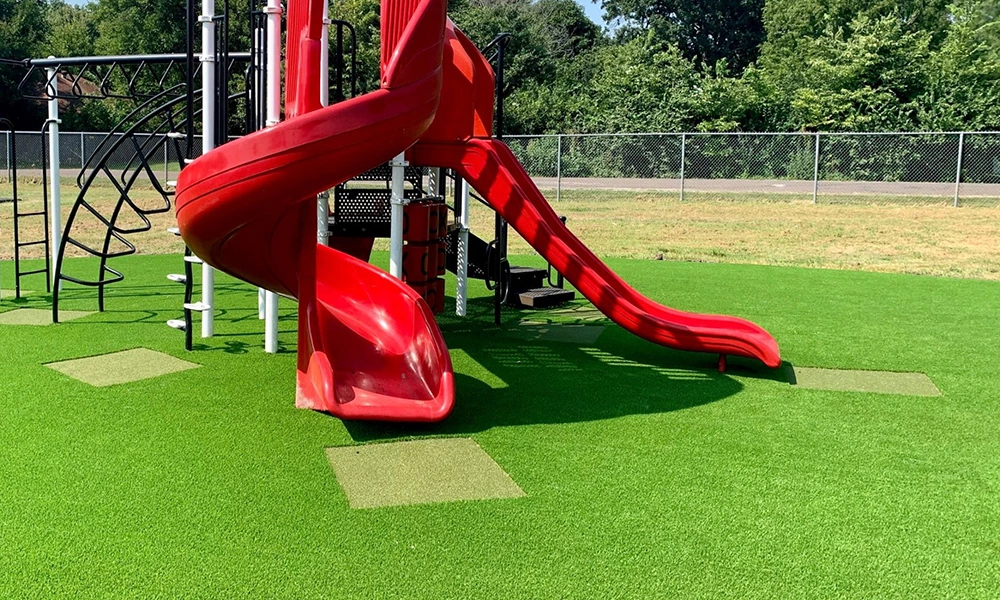
Distinctive and aesthetically pleasing design enhances the playground's appeal
In terms of aesthetic appeal, modern artificial turf offers a high degree of fidelity and lifelike, natural colors, creating a vibrant, green environment for playgrounds. More importantly, artificial turf can be customized to suit the theme of the playground, creating colorful patterns, cute cartoon shapes, and various athletic lines. This greatly enhances the playground's fun and visual impact, attracting more children.
Using environmentally friendly materials and practicing sustainable concepts
From an environmental perspective, with growing public awareness of environmental protection, playgrounds are increasingly prioritizing sustainable materials. Many artificial turf products today are made from recyclable, non-toxic materials, making them environmentally friendly. Compared to natural lawns, which require large amounts of water for irrigation and may require the use of pesticides and fertilizers during maintenance, artificial turf achieves virtually zero emissions and pollution, effectively conserving resources and reducing environmental pressure, making it ideally suited to the concept of urban ecological playground construction.
These types of artificial turf are more suitable for playgrounds, tailored to the specific needs of the playground
Not all artificial turf types are suitable for playgrounds; choosing the right type depends on the specific needs of the playground
High-resilience cushioning: Enhanced fall protection
High-resilience cushioning artificial turf is a popular choice for playgrounds. This type of turf incorporates special elastic cushioning between the base layer and the grass strands, or utilizes highly elastic grass strands to provide enhanced shock absorption. For areas with slides, swings, climbing frames, and other play structures, high-elasticity cushioning artificial turf can better absorb impact when children fall from heights, further ensuring their safety.
High-density, wear-resistant artificial turf: Resists frequent foot traffic
High-density, wear-resistant artificial turf is also ideal for playgrounds. Playgrounds typically experience high foot traffic, and the surface must withstand frequent and sustained foot traffic. The densely packed grass strands provide increased toughness and wear resistance, resisting long-term wear and tear, maintaining the turf's structural stability and aesthetic appearance, and extending its lifespan. It is particularly suitable for open areas in playgrounds where children gather.
Customizable color patterns: Create themed playscapes
Customizable color patterns add even more fun to playgrounds. This type of artificial turf can be customized with a variety of colorful patterns, cartoon characters, numbers, letters, and more, tailored to the playground's theme and design requirements. For example, in a toddler play area, colorful artificial turf with patterns of small animals and flowers can spark interest. In areas for older children, designs like running tracks and game grids can enrich the playground's functionality and enhance its overall visual appeal.
Environmentally friendly and non-toxic: Protecting children's health and safety
Environmentally friendly and non-toxic artificial turf is key to protecting children's health. Since children may touch the ground or even chew the turf in a playground, it's crucial to choose artificial turf made from environmentally friendly and non-toxic materials. This type of turf contains no harmful substances and has passed relevant environmental testing and certification, ensuring the health and safety of children while playing, giving parents and administrators peace of mind.
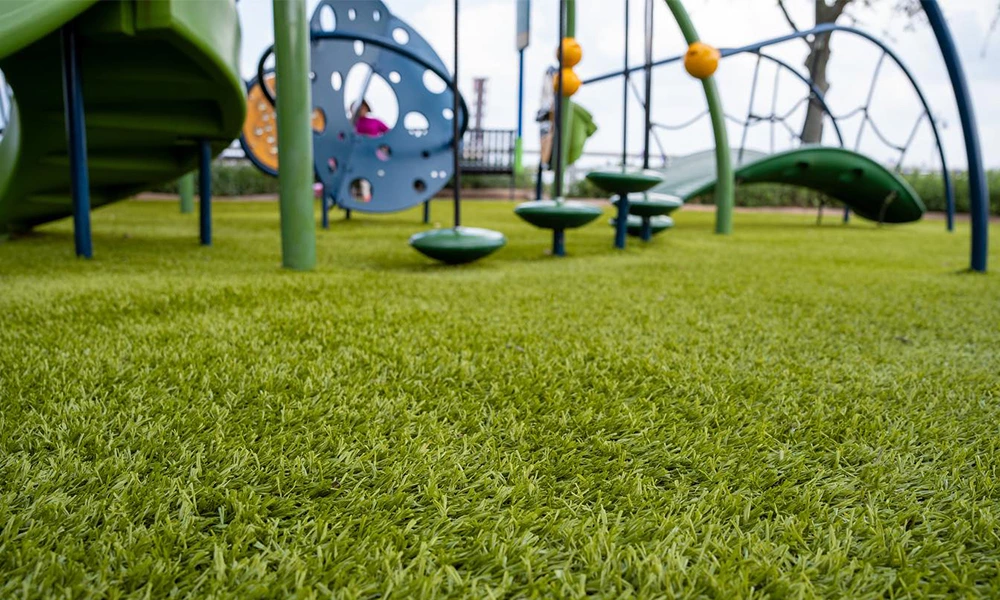
Types and parameter configurations of artificial turf for playgrounds
Artificial grass playgrounds can be customized according to usage scenarios and functional requirements. The following are common types and their key parameters:
| Type | Applicable scenarios | Grass height (mm) | Density (cluster/m²) | Base layer recommendations |
| Colorful patterned lawn | Kindergarten, theme park | 25–30 | ≥16800 | EPDM soft rubber cushion or EVA cushion |
| High-density sports lawn | School, outdoor multi-functional venue | 30–40 | ≥21000 | Concrete/asphalt + buffer layer |
| Family backyard landscaping lawn | Villa courtyard, community children's playground | 20–35 | 13650–18900 | Gravel layer + geotextile |
| Fireproof and environmentally friendly lawn | Commercial large-scale amusement projects, indoor venues | 25–30 | ≥16800 | Environmentally friendly fireproof ground foundation |
Comparison and analysis with other playground floor materials
| Material | Safety | Maintenance cost | Durability | Appearance | Environmental protection | Applicability |
| Artificial turf | ⭐⭐⭐⭐ | ⭐⭐⭐⭐⭐ | ⭐⭐⭐⭐ | ⭐⭐⭐⭐ | ⭐⭐⭐⭐ | Various scenarios |
| Natural turf | ⭐⭐⭐ | ⭐ | ⭐⭐ | ⭐⭐⭐ | ⭐⭐ | Easily affected by weather |
| Rubber mat | ⭐⭐⭐⭐ | ⭐⭐⭐ | ⭐⭐⭐ | ⭐⭐ | ⭐⭐⭐ | Generally used indoors |
| Sand/wood chips | ⭐⭐ | ⭐⭐ | ⭐ | ⭐ | ⭐⭐ | Easily breed pests, not durable |
| Cement/asphalt | ⭐ | ⭐⭐⭐⭐ | ⭐⭐⭐⭐ | ⭐ | ⭐ | Not suitable for children to fall |
Artificial Turf Empowers Playgrounds
Overall, artificial turf, with its multiple advantages, including strong safety and protection, low maintenance costs, aesthetic appeal, and environmental sustainability, perfectly meets the core requirements of playground flooring materials. Choosing the right artificial turf not only creates a safe, comfortable, and fun play environment for children, but is also an ideal choice for enhancing the quality and appeal of a playground.
